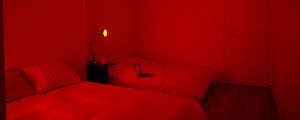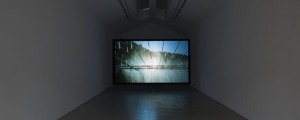Paris used to look very different to the city we know now. Before General Haussmann was given the command to redesign the urban layout so as to make it more easily controllable by law enforcement, the city was a rabbit warren of tiny streets and passages. Some districts were left untouched, such as the Mouffetard quarter in the fifth arrondissement, but in general Paris underwent a complete transformation, with wide avenues ploughing through the maze of small streets, to the fury of most citizens (especially artists) who saw this as the massacre of Paris’ persona.

Eugène Atget documented Paris during her makeover, from 1898 until his death in 1927, becoming one of the most famous European photographers of the twentieth century. His photographs, predominantly albumen prints, capture the city during a period of immense change, and provides a fascinating retrospective on “l’ancien Paris”.
The exhibition at the Carnavalet Museum is particularly exciting because it houses not only 230 photographs by Atget (some of which have never been exhibited before), but also 40 pieces by the surrealist American photographer Man Ray and relatively-unknown French contemporary Emmanuel Pottier.
The exhibition is organised according to theme, starting from the beginning of his career, where Atget’s stills capture the “petits commercants” of Paris, shops and street life. We are then presented with photographs of a more natural flavour- parks and the river Seine, before Atget then starts to look at Paris’ insides, capturing interior life.

I say “capturing”, but Atget’s photographs have never read spontaneity. Being an actor himself, one can see the love of theatrics and mise en scene. There is a consistent sense of performance in Atget’s images, without losing the notion of reality. His style was nonetheless atypical for his époque: taking photographs of people/objects/scenes for themselves, not for the graphic representation they might present. As the introduction to the exhibition explains “il montre un sujet par rapport au sujet lui-même et pas par rapport à un tableau qu’il pourrait faire”.
The Carnavalet Museum presents Atget’s work beautifully, and is the most appropriate location for such an exhibition, as the building itself provided the photographer with several of his prints. With sombre walls, and a logical series of corridors leading us through the development of Atget’s career, the progression from one photograph to another gives the impression of footsteps through Paris, especially as many are framed neatly in dark frames with large white borders. These are snapshots of history we are peering into. Large, standing blow-ups of certain stills bring the collection to life.

Whether Atget produced his work as a purely commercial objective or from artistic motivations remains debatable, but what is sure is that he encapsulated a Paris that was on the brink of disappearing, a city that we will never know. His photographs are a testimony to the history of the French capital city.






















